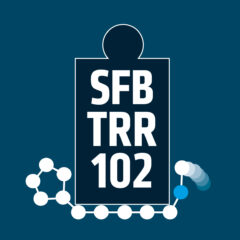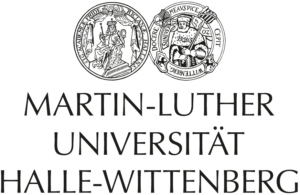Varun Danke on “Structure formation in nanophase-separated polymers with lamellar morphology: Comb-like vs linear precision polymers”
and Arne Böker on “Loop formation of polyglutamines in the PRIME20 model”
Location: Martin-Luther-Universität Halle-Wittenberg Von-Danckelmann-Platz 3, SR 1.09 06120 Halle (Saale) Time: 3.00pm - 4.30pm Link to Google-Maps
Abstracts
Structure formation in nanophase-separated polymers with lamellar morphology: Comb-like vs linear precision polymers
Varun Danke
Comb-like polymers with rigid backbones and flexible alkyl side chains form an interesting class of functional materials which find potential applications in organic semi-conductors light emitting diodes, electrolyte fuel cells and light weight composites. Similarly, precision polymers incorporating functional groups placed regularly along a linear chain composed of methylene units synthesized by the ADMET polymerization method have received a lot of attention recently. Both these classes of polymers often exhibit lamellar morphology due to phase separation of longer methylene sequences and ring-like sub-units on length scales of 1- 3 nm. Here we present a comparative study focusing on structural features and packing state of alkyl nanodomains in different comb-like polymers like alkoxylated polyesters (PPAOTs) and alkoxylated polyphenylene vinylenes (AOPPVs) with varying side chain lengths (C = 6- 12) as well as precision polymers incorporating a 2,6-diaminopyridine group (PDAPS) with different spacer lengths (16-20 CH2 units) by X-ray diffractometry. The packing states of the methylene sequences are identified by quantifying the volume occupied per CH2 unit (VCH2) based on the crystallographic unit cell analysis. While AOPPVs show clear indications for a densely packed, crystal-like packing1 of the methylene sequences in alkyl nanodomains, PPAOTs show two polymorphs A and B with either amorphous or crystalline alkyl nano- domains respectively depending on thermal history and side chain lengths2. Interestingly the investigated PDAPS polymers show indications for disordered alkyl nanodomains3. Additionally, the influence of shear fields on molecular orientation is also discussed.
References:
- T. Babur, G. Gupta and M. Beiner; About different packing states of alkyl groups in comb-like polymers with rigid backbones, Soft Matter, 2016, 12, 8093-8097
- G. Gupta, V. Danke, T. Babur and M. Beiner; Interrelations between side chain and main chain packing in different crystal modifications of alkoxylated polyesters, J. Phys. Chem. B, 2017, 121, 4583-4591
- V. Danke, G. Gupta, S. Reimann, W. Binder and M. Beiner; Structure formation in nanophase separate systems with lamellar morphology: Comb-like vs. Linear precision polymers. Eur. Polym. J. 116-123, 2018
Loop formation of polyglutamines in the PRIME20 model
Arne Böker
We perform thermodynamic simulations of single polyQ chains represented by the intermediate-resolution PRIME20 model using the SAMC variation of Wang-Landau Monte Carlo sampling which provides insight into different statistical ensembles at the expense of dynamic information. Our results for the end-to-end distance distribution at physiological conditions agrees reasonably well with experimental findings. In this temperature range, the single-chain morphology for the chain lengths we studied is not yet dominated by hairpin structures which are formed at lower temperatures.





One thought on “Doctoral students seminar (April 24, 2018)”